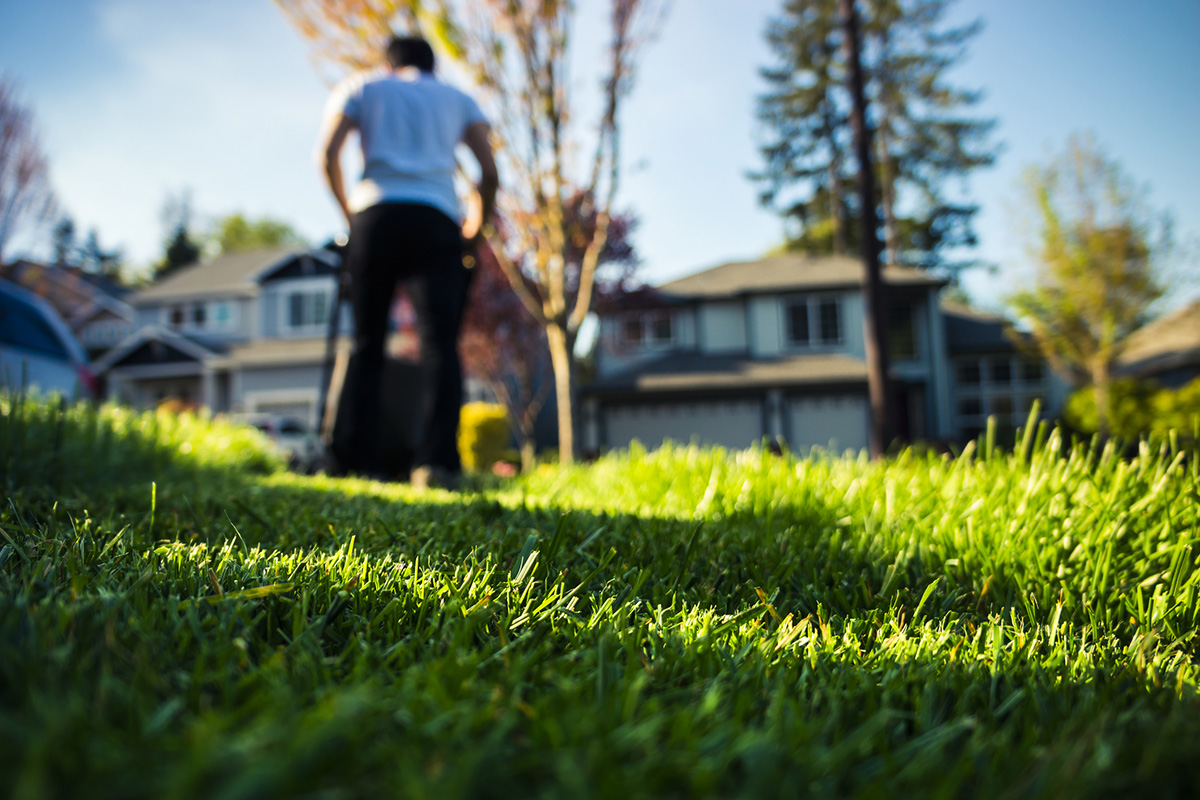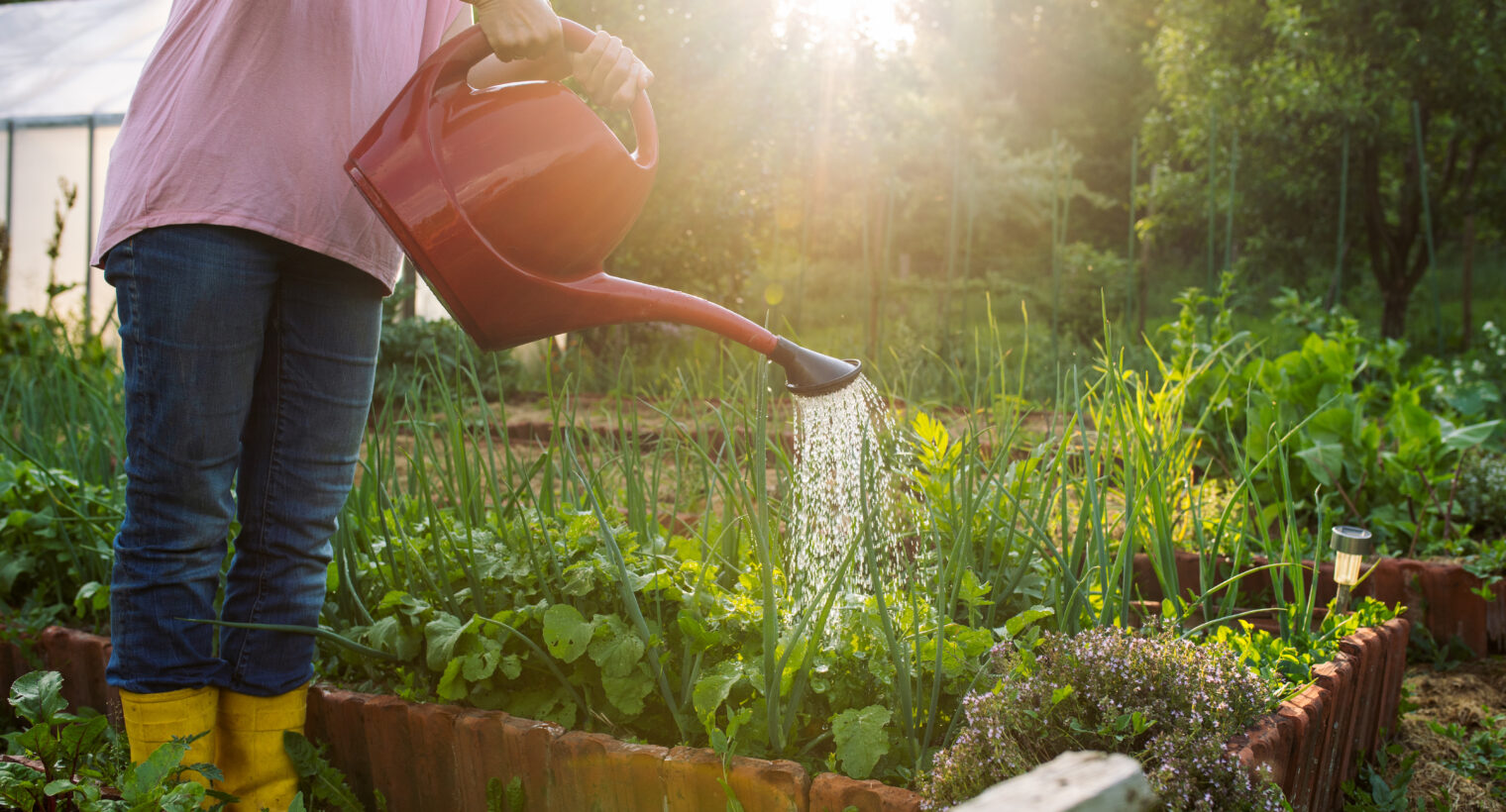By Sally Cunningham
_________________________________
Watering is probably the single most poorly understood task in gardening, and yet no job is more important for young plant survival. Correct watering is also increasingly important in times of climate extremes—drought periods for instance. Watering can also be one of the most pleasurable and relaxing part of a gardener’s routine. Let’s be sure that the watering you do is meaningful.
There are reasons that watering is so easily done wrong. For one, appearance fools us: You (or the non-gardener you assigned to the job) wet the soil and it turns darker brown, so it looks like the job is done when it definitely is not done. Second, soils are so variable, so you can’t just time or measure watering and expect consistency. The old rule-of-thumb–that a garden needs an inch of water a week–is fairly useless in many kinds of soil, in many conditions, and for many kinds of plants.
Whatever you are watering, from the lawn to the trees, consider this guideline for deciding how much to water your plants: Your hose or sprinkler must deliver enough water to soak the plant roots wherever they are. It might need to penetrate 2 inches deep for turfgrass, 8 inches deep for a perennial or tomato, and 18 inches deep for a shrub or tree. The measurements are just general guidelines; the principle stands.
How to water smarter
- Water thoroughly and deeply when you water. Shallow watering stresses and weakens plants, causing their roots to linger near the soil surface. Deep watering encourages deep roots.
- Don’t water daily, with the exceptions of recently planted lawns, tiny seedlings, or some hanging baskets in hot weather. If you have limited time, instead of watering a large area every day, cover one section or bed thoroughly one day, and another area the next time.
- Water according to plant needs, not on a schedule. Clues to their needs: Water vegetables and most annuals or perennials when the soil feels dry 2 inches down, or when you see signs of stress (drooping, for instance). Water recently planted trees and shrubs when the soil dries out around the root balls; use a trowel or shovel to check for dryness. Water hanging baskets, houseplants, or container plants when they feel light when you lift them, or when the top of the soil feels dry to your fingers.
- Timing matters. Watering in the morning is ideal, but you must water when plants need it, whenever that is. Midday watering is least effective because more water evaporates and sometimes plants can get scorched or “sunburned.” The trouble with evening water is that fungus diseases as well as slugs benefit from nighttime dampness.
- Choose the watering tools or systems that suit the planting and your lifestyle. Some landscapes benefit from professionally installed watering systems, but they must be placed and timed correctly. Most gardens thrive when gardeners deliver water at the base of plants with a water wand attached to a hose. Sprinklers are relatively ineffective because they disperse water randomly, not always reaching roots, with much waste and water loss (as much as fifty percent) into the air. However, carefully aimed and calibrated sprinklers can be effective if they are matched with the crops or garden plants. Gator bags or tree bags (usually green bags that take many gallons of water and disperse it gradually through drip holes) are great for getting enough water to tree roots—if used as intended. Five-gallon buckets with a few holes in the bottom will also disperse volumes of water if the buckets are placed near thirsty roots.
_________________________________
Do you really need to water?
For many decades the term xeriscaping has been used to describe landscaping for low or minimal water use. (Xeri means dry in Greek.) The word elicits images of cacti and rocks, gravel and sand, with scattered desert groundcovers. That’s not a WNY style.
More suitable: A WNY xeriscape garden applies these practical water conservation principles:
- Plants are grouped together by water needs. Moisture-loving native perennials such as Asclepias incarnata (swamp milkweed), Lobelia cardinalis (cardinal flower), Monarda didyma or M.fistulosa (beebalm) and Veronicastrum virginicum (Culver’s root) cluster near willows and Amelanchiers (Serviceberries). In a sunny, hot section of the yard—where water can reach easily—Asclepias tuberosa (Butterfly weed), Aster novi-belgii (New York aster), and Rudbeckia hirta (black-eyed Susan) create a bright display that attracts butterflies and bees.
- New plantings are watered until they are established, or during extremely dry periods. Otherwise perennials and woody plants do well without watering because they are in suitable sites and soil.
- Plants grow in layered beds or hedgerows. Trees are surrounded with shrubs, perennials, grasses, and groundcovers (that have similar needs and grow together in natural settings). The soil is covered by plants, rather than by woody mulch.
- Lawns, where you want them, are planted in compost-rich soil. The grass is thick and is left slightly tall—never scalped. Only new lawns are watered. In summer, established lawns can go dormant and brown and will return in the rainfalls of autumn.
Watering is part of gardening, but it need not be wasteful, burdensome, or expensive. If you water at all, water wisely.
_________________________________
Sally Cunningham is a horticulture expert, with former Master Gardener and Cornell Cooperative Extension positions. Currently she is an author, speaker, and garden tour director with AAA of Western and Central New York.
_________________________________


